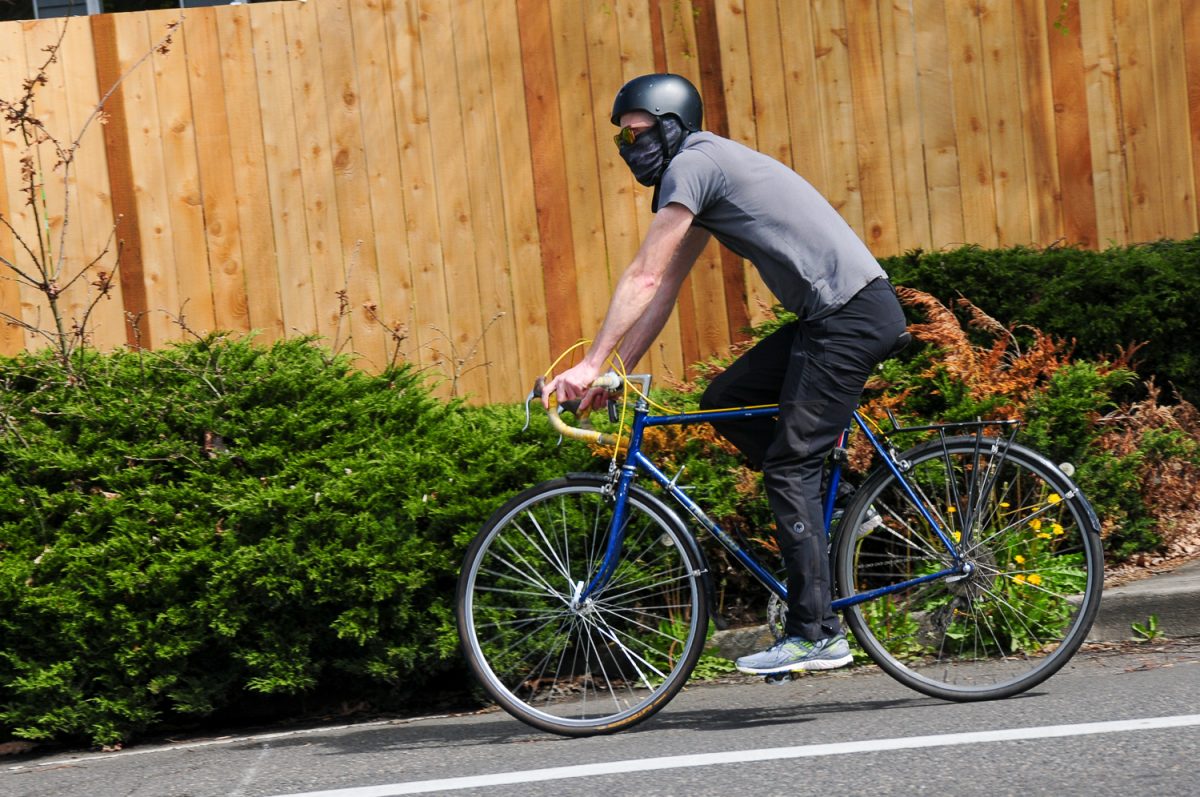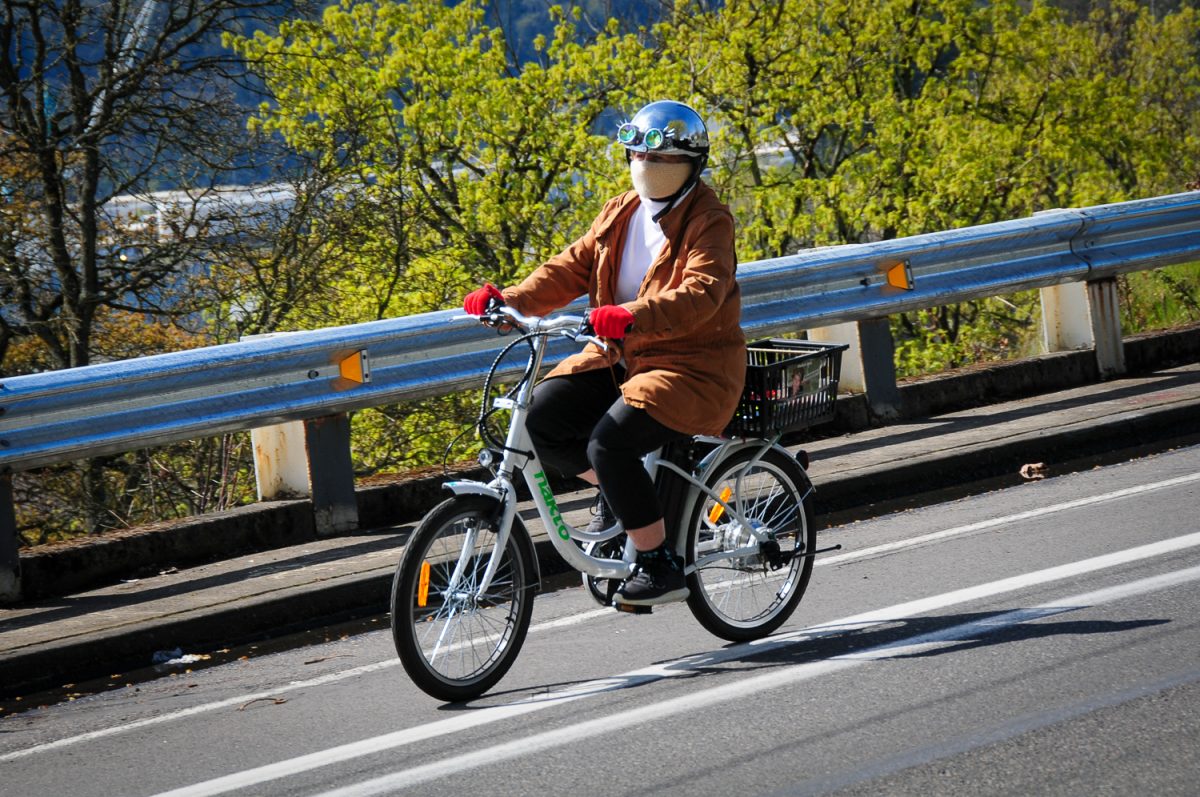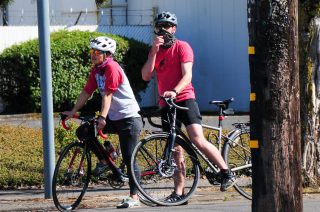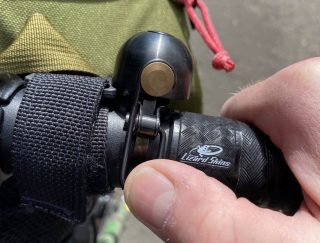



The Age of Masks is upon us.
The deeper we get into this pandemic, the more apparent it becomes that we need a much more radical approach to cycling outside than simply saying “ride alone”.
With growing concerns about COVID-19 infections, Multnomah County health department now recommends the use of masks when you cannot maintain six-feet of distance between yourself and others while outside. As we shared yesterday, there’s good reason to think that distance should be far greater when heavy-breathing, snot-flying runners and bicycle riders are in the mix.
The deeper we get into this pandemic, the more apparent it becomes that we need a much more radical approach to cycling outside than simply saying “ride alone”. And it’s not just wearing masks: We need to give each other more space at stops; more warning when we pass each other; and more thought to where and when we ride to avoid crowds.
Below are some of my thoughts on these topics. Would love to hear yours in the comments.
Masks
Wearing something over my face when it’s freezing out is one thing; but doing it all the time even when it’s relatively warm is an entirely different animal. We really should wear masks while biking near others, and from my first few experiences, it’s not going too well.
I’ve worn both a traditional medical mask and a cloth neck buff thingy (from Castelli). Both of them fogged up my glasses, were constantly sliding around, and were generally uncomfortable.
As commenter Kyle pointed out so well yesterday, “There’s a steep learning curve trying to figure out how to breath properly, blow your nose, and drink/eat on the bike. Not to mention how to keep from constantly touching your face trying to keep it on correctly.”
What to do? As usual, I recommend trying different things to see what works best for you. Our friends at Portland-based Blaq Paks are making what appear to be excellent washable cotton masks for $10 a piece. There’s also a popular, no-sew version you can make with hair ties and a bandanna. Personally, I plan to only wear a mask when I’m in the city near crowds and will move it down/take it off when I get out into the wide open and/or when there’s absolutely no one around.
Advertisement
Give Extra Space
Please remember to keep your distance from other riders. This is especially true at signals and stop signs where there will be an urge to crowd at the front to make the light. Thankfully PBOT has installed dozens of bike boxes on busy bikeways. Use all that space!
Drafting off strangers has always been annoying. Now it’s just plain dangerous. If you are going faster than someone else and must pass them, please wait until there’s plenty of safe space to do so. Just be patient. Take a few breaths and think about all the people dying today because of this virus. If you jerkishly squeeze around someone, you are no different than people in cars who do it (the horror!).
Use Your Bell
I have always been a huge proponent of using a bell. I use mine constantly whether I’m in around-town mode or in got-fast-spandex mode. These days with the virus flying around, it is more important than ever to warn people of your presence. 
And remember, just because you’ve rung your bell doesn’t mean you can pass someone closely or get mad if they don’t hear you. Many people wear headphones or might have some other reason why they can’t hear you. And this is America, where people are not yet conditioned to move over when they hear a bike bell.
If you don’t have a bell, a simple audible greeting works too. I am not a fan of barking “On your left!” because it’s not polite. If I can’t use a bell, I will slow way down and say something like “Howdy” or “Hi there” to get a person’s attention before going by.
Timing and Routes


With so many people flocking to well-known bikeway connections like the Springwater, Esplanade, Powell Butte, Mt Tabor Park and so on, you’d be wise to avoid them if possible. If those of us who are capable and willing to use lesser-known routes — even larger arterials that have much less traffic than usual right now — we can help reduce crowds in other places.
While considering a route, look for big streets and arterials that have more than one lane in each direction. Streets with one lane and a center turn lane and parking lanes are also a good option (like outer East Glisan).
I also highly recommend riding during off-peak hours if possible. With warmer temps in the forecast, now is a great time to consider riding between sunset and sunrise.
I hope these tips are helpful.
What did I leave out? What else should we know about the new rules for riding during the pandemic?
See more of our coronavirus coverage here.
— Jonathan Maus: (503) 706-8804, @jonathan_maus on Twitter and jonathan@bikeportland.org
— Get our headlines delivered to your inbox.
— Support this independent community media outlet with a one-time contribution or monthly subscription.

